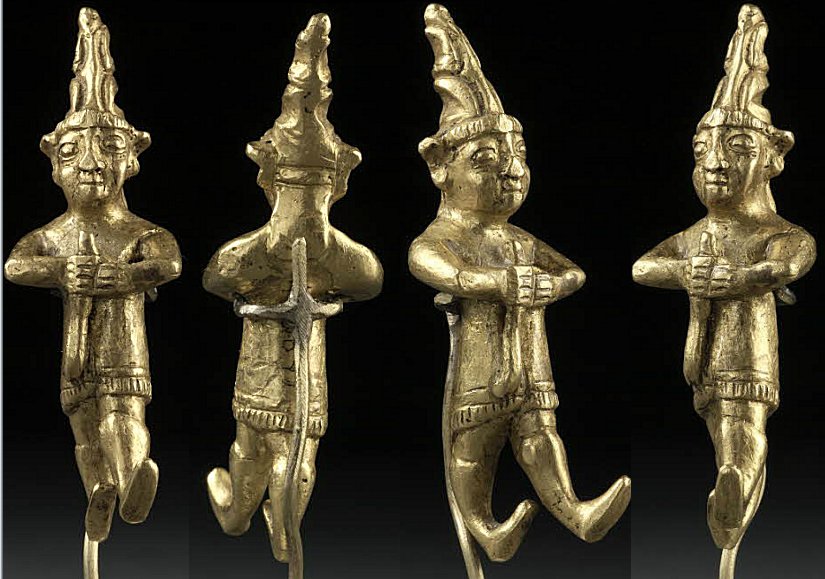Golden Figurine From Yozgat Depicts Unknown Hittite God
A. Sutherland - AncientPages.com - Hittites were one of the most important ancient civilizations of Asia Minor. They ruled the central Anatolian kingdom of Hatti from c. 1900 – 800 BC., and worshiped a number of gods and goddesses; they were described as the “civilization of 1,000 gods”.
As the conquerors of many lands, the Hittites found it useful to adopt the gods of other cultures into their own religious pantheon. Thus, the Hittite religion came to include gods worshiped by the Babylonians, Assyrians, Hurrians, and others, as well as the gods of the indigenous Hattian people of Anatolia.
The second reason for this massive number of gods is that most cities and towns in the Hittite empire had their own versions of similar deities. Thus, a single god could end up being turned into several different local deities with little difference between them other than the name.
Like many other ancient civilizations, the Hittites worshipped weather gods and the God of Storm. The preserved Hittite art consists primarily of reliefs, often architectural. There is also art in the smaller format, which developed during the Hittites' the Middle Kingdom that lasted from the 15th to 14th century and was a rather weak phase in the empire’s history.
During this period - largely unknown with very sparse surviving records - the art of Hittite diplomacy was developed.
This figurine from Yozgat is an example of this kind of art.
It is an amulet pendant (H. 3.80 cm; W. 1.30 cm; D. 1.30 cm), depicting the Hittite god from the time of the Hittite Empire. It was used by the ancient Hittites during the time when the Israelites were slaves in Egypt.
The figurine’s divinity is indicated by the short garment and the tall conical tiara; the sword in his hands additionally suggests that he is a warrior god, Teshub, the Hurrian god of sky and storm. Several myths about Teshub survive in Hittite versions.
Teshub is often depicted holding a triple thunderbolt and an axe (often double-headed) or mace.
In the religions of Asia Minor, the Hurrian weather god was assimilated by the Hittites to Tarhun, the central Hittite god related to the sky, weather, and thunder. According to a myth, one of Tarhun’s greatest achievements was the slaying of Illuyanka, a powerful dragon or serpent.
Written by – A. Sutherland AncientPages.com Staff Writer
Copyright © AncientPages.com All rights reserved. This material may not be published, broadcast, rewritten or redistributed in whole or part without the express written permission of AncientPages.com
Expand for referencesMore From Ancient Pages
-
 Unknown Ancient World Discovered Beneath East Antarctic Ice Sheet
Earth Changes | Oct 24, 2023
Unknown Ancient World Discovered Beneath East Antarctic Ice Sheet
Earth Changes | Oct 24, 2023 -
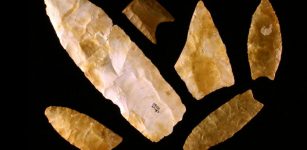 Clovis Culture: Will Ancient Tools Solve Mystery Of North America’s Earliest Inhabitants?
Archaeology | Oct 26, 2020
Clovis Culture: Will Ancient Tools Solve Mystery Of North America’s Earliest Inhabitants?
Archaeology | Oct 26, 2020 -
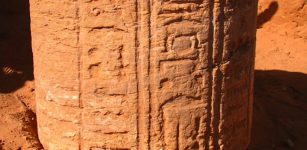 Abu Erteila’s Lost Temple And The Meroitic Empire: New Discoveries Shed Light On Nubian Civilization
Archaeology | Jan 14, 2016
Abu Erteila’s Lost Temple And The Meroitic Empire: New Discoveries Shed Light On Nubian Civilization
Archaeology | Jan 14, 2016 -
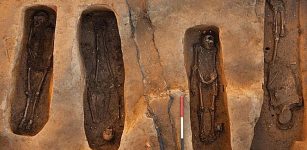 Jamestown: Unearthed graves with four bodies and a small sealed silver box
News | Aug 28, 2015
Jamestown: Unearthed graves with four bodies and a small sealed silver box
News | Aug 28, 2015 -
 Aboriginal ‘Memories’ Of Australia’s Coastline Go Back More Than 7,000 Years
Civilizations | Sep 30, 2015
Aboriginal ‘Memories’ Of Australia’s Coastline Go Back More Than 7,000 Years
Civilizations | Sep 30, 2015 -
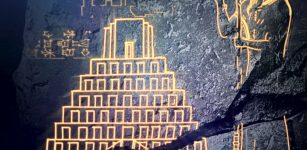 Deciphered Ancient Tablet May Depict Biblical Tower Of Babel – New Evidence
Archaeology | May 9, 2017
Deciphered Ancient Tablet May Depict Biblical Tower Of Babel – New Evidence
Archaeology | May 9, 2017 -
 The First Australians Ate Giant Eggs Of Huge Flightless Birds That Went Excinct Over 47,000 Years Ago
Archaeology | May 25, 2022
The First Australians Ate Giant Eggs Of Huge Flightless Birds That Went Excinct Over 47,000 Years Ago
Archaeology | May 25, 2022 -
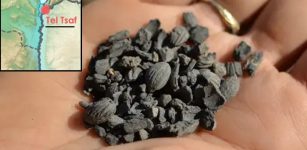 Ancient Cotton Fibers Dating Back 7,000 Years Discovered In NE Israel
Archaeology | Dec 19, 2022
Ancient Cotton Fibers Dating Back 7,000 Years Discovered In NE Israel
Archaeology | Dec 19, 2022 -
 15,000-Year-Old Shell Beads Found Kebara Cave Are The Oldest Known Use Of Organic Red Pigments
Archaeology | Oct 27, 2023
15,000-Year-Old Shell Beads Found Kebara Cave Are The Oldest Known Use Of Organic Red Pigments
Archaeology | Oct 27, 2023 -
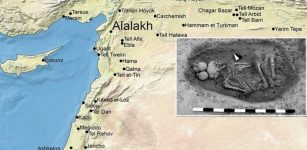 Researchers Study Human Mobility At The Bronze Age City Of Alalakh, Turkey
Archaeology | Jul 1, 2021
Researchers Study Human Mobility At The Bronze Age City Of Alalakh, Turkey
Archaeology | Jul 1, 2021 -
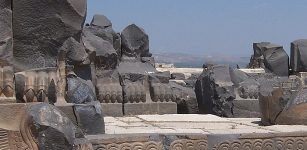 Unsolved Mystery Of The Giant Footprints Outside The Ain Dara Temple
Featured Stories | Jun 7, 2014
Unsolved Mystery Of The Giant Footprints Outside The Ain Dara Temple
Featured Stories | Jun 7, 2014 -
 On This Day In History: Supernova Observed In Constellation Lupus By Chinese And Egyptians – On May 1, 1006 AD
News | May 1, 2016
On This Day In History: Supernova Observed In Constellation Lupus By Chinese And Egyptians – On May 1, 1006 AD
News | May 1, 2016 -
 Wendigo: Cannibalistic Shapeshifter In Mythology Of Indians Of North America And Canada
Featured Stories | Sep 3, 2016
Wendigo: Cannibalistic Shapeshifter In Mythology Of Indians Of North America And Canada
Featured Stories | Sep 3, 2016 -
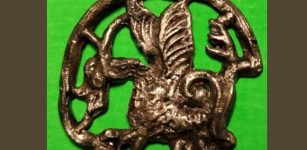 Medieval Pilgrim’s Badge (‘Pilgrim’s Sign’) Depicting A Basilisk Dragon In A Circle Discovered In Southeastern Poland
Artifacts | Mar 5, 2024
Medieval Pilgrim’s Badge (‘Pilgrim’s Sign’) Depicting A Basilisk Dragon In A Circle Discovered In Southeastern Poland
Artifacts | Mar 5, 2024 -
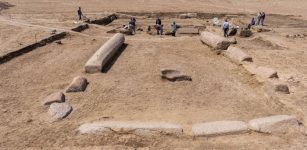 Ancient Temple Dedicated To God Zeus Discovered In Sinai, Egypt
Archaeology | Apr 26, 2022
Ancient Temple Dedicated To God Zeus Discovered In Sinai, Egypt
Archaeology | Apr 26, 2022 -
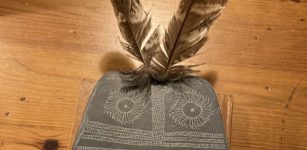 Were Owl-Shaped Plaques Children’s Toys In Copper Age?
Archaeology | Dec 1, 2022
Were Owl-Shaped Plaques Children’s Toys In Copper Age?
Archaeology | Dec 1, 2022 -
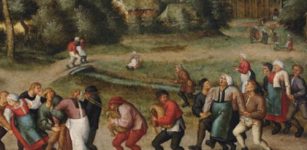 Unexplained Phenomenon Of The Dancing Mania That Occurred During The Middle Ages
Featured Stories | Aug 1, 2014
Unexplained Phenomenon Of The Dancing Mania That Occurred During The Middle Ages
Featured Stories | Aug 1, 2014 -
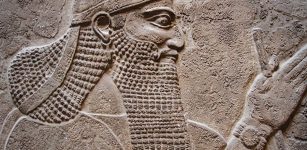 Unexpected Discovery Of 600 B.C Assyrian Palace In Shrine Destroyed By Isil Militants
Archaeology | Mar 2, 2017
Unexpected Discovery Of 600 B.C Assyrian Palace In Shrine Destroyed By Isil Militants
Archaeology | Mar 2, 2017 -
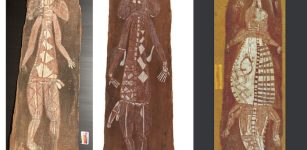 Solving The Bark Painting Mystery In Australia
Archaeology | Feb 23, 2023
Solving The Bark Painting Mystery In Australia
Archaeology | Feb 23, 2023 -
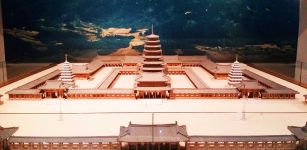 Mireuksa Pagoda: Largest And One Of The Oldest Of Korean Pagodas
Archaeology | Jan 1, 2016
Mireuksa Pagoda: Largest And One Of The Oldest Of Korean Pagodas
Archaeology | Jan 1, 2016

